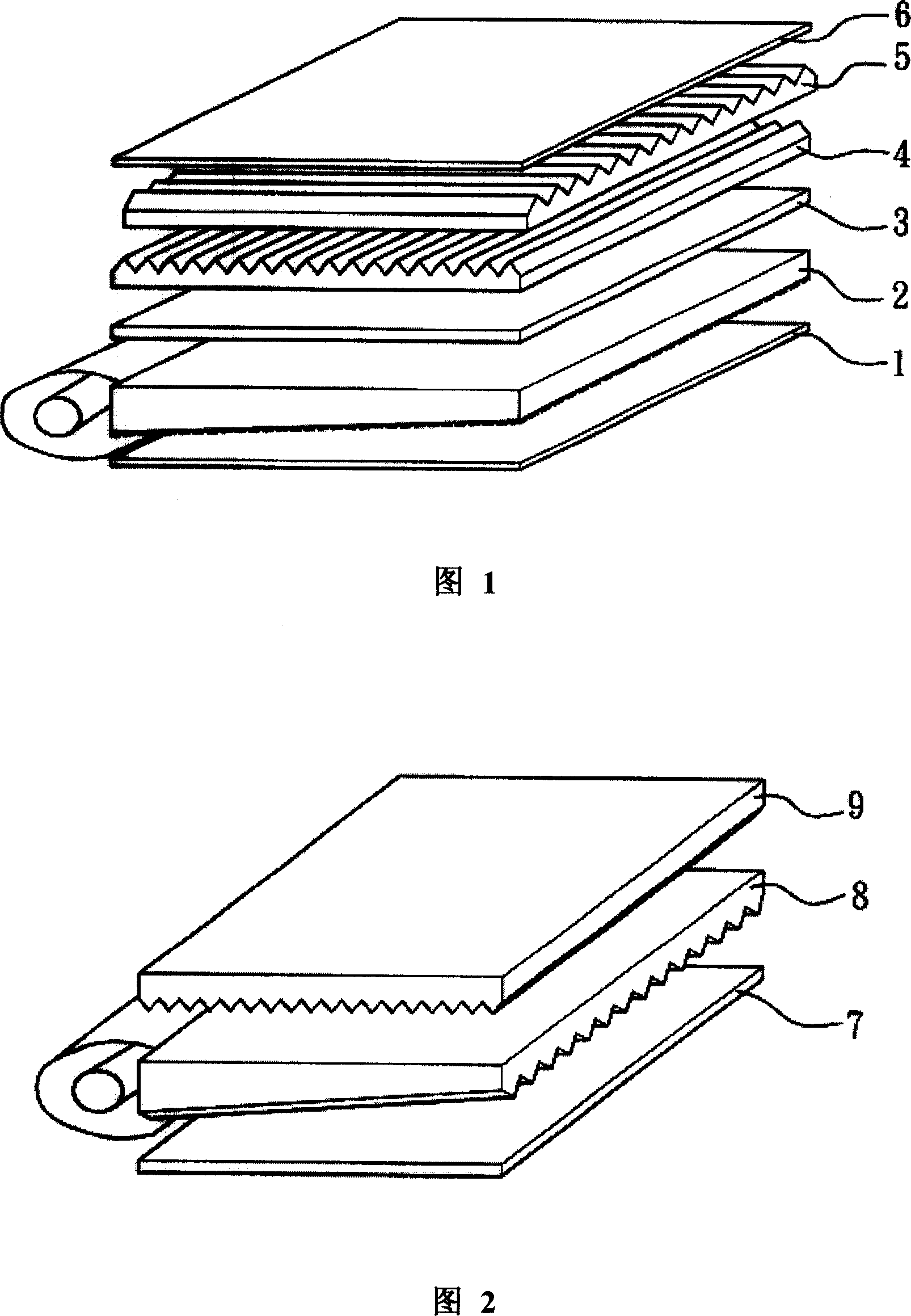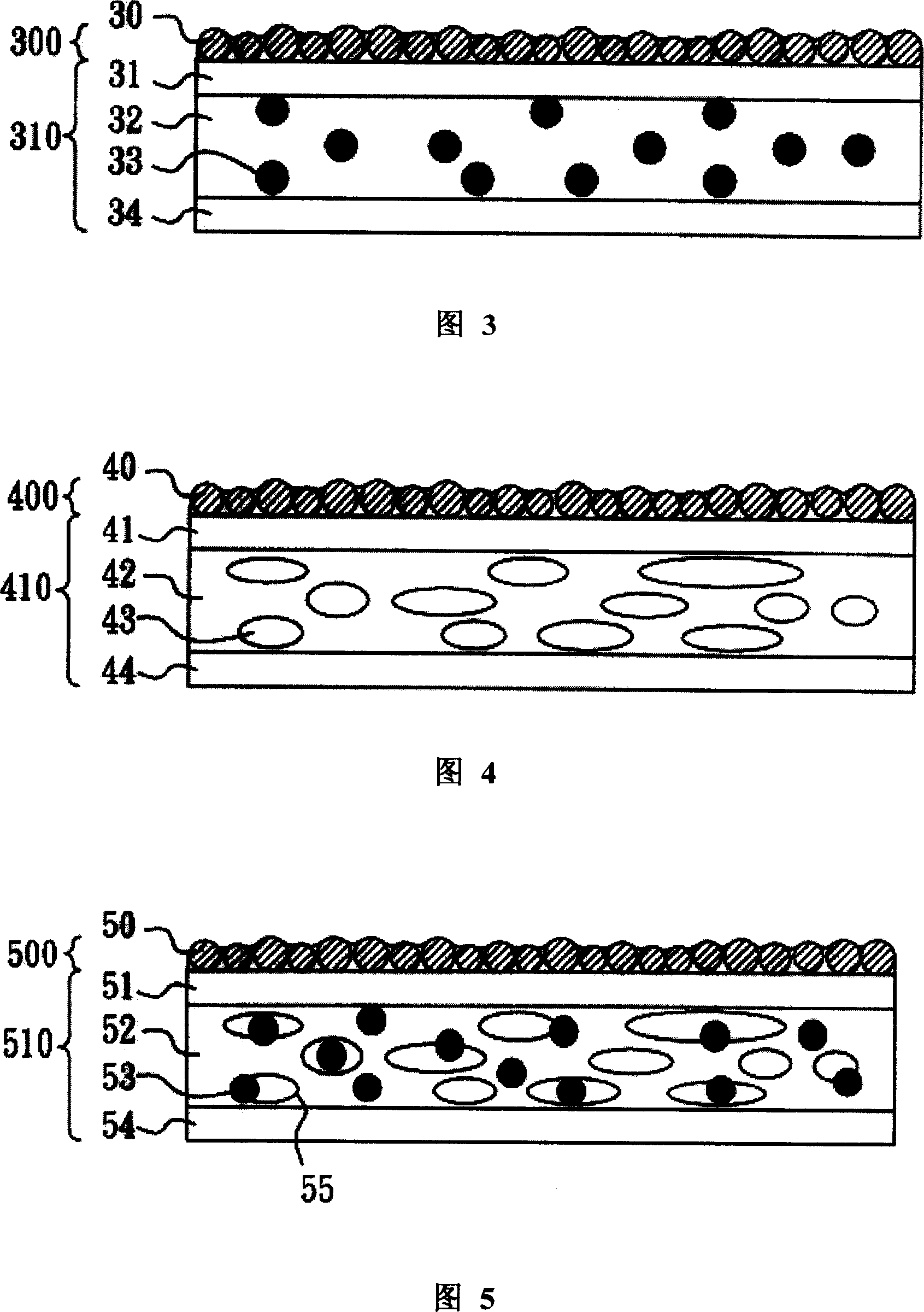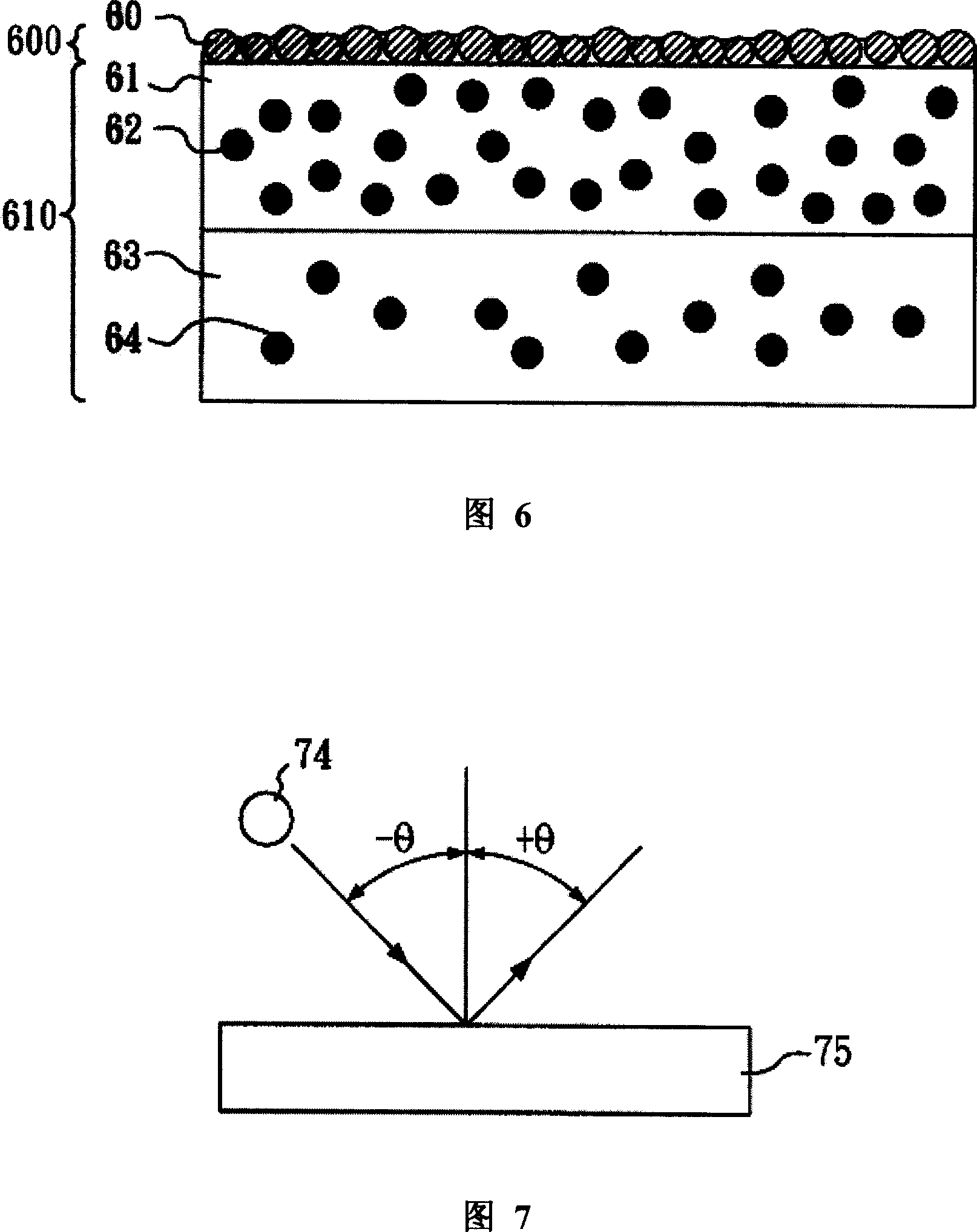Antiscraping optical film and use thereof
A technology of optical film and anti-scratch layer, applied in the field of optical film, can solve the problems of slow production speed, weak mechanical strength, poor light uniformity, etc., and achieve the effect of solving technical problems and low volume shrinkage rate
- Summary
- Abstract
- Description
- Claims
- Application Information
AI Technical Summary
Problems solved by technology
Method used
Image
Examples
Embodiment 1
[0098] Take a 250 ml glass bottle, and add solvents: 16 grams of toluene and 13 grams of methyl ethyl ketone into the glass bottle. Under high-speed stirring, add UV curable resin in sequence: 8 grams of monomer mixture of 2-hydroxyethyl methacrylate, methyl methacrylate, butyl acrylate and pentaerythritol triacrylate, thermosetting resin: 16 grams of acrylate Resin [Eterac 7363-ts-50, Eternal company] (solid content about 50%), then add 1.6 grams of hardener [Desmodur 3390, Bayer company] (solid content about 75%), 1.6 grams of antistatic agent [GMB-36M -AS, Marubishi oil Chem.Co., Ltd] (solid content about 20%), photoinitiator: a total of 0.6 grams of benzophenone and 1-hydroxycyclohexyl phenyl ketone mixture, finally soaked into a solid content of about 30% and a total weight of approximately 57.6 grams of paint. Use RDS smear stick #6 to coat the paint on the surface of one side of the reflective sheet UX-188 [Teijin-Dupont Company], dry it at 100°C for 1 minute, and then...
Embodiment 2
[0100] Take a 250 ml glass bottle, and add solvents: 16 grams of toluene and 13 grams of methyl ethyl ketone into the glass bottle. Under high-speed stirring, add UV curable resin in sequence: 8 grams of monomer mixture of 2-hydroxyethyl methacrylate, methyl methacrylate, butyl acrylate and pentaerythritol triacrylate, thermosetting resin: 16 grams of acrylate Resin [Eterac 7363-ts-50, Eternal company] (solid content about 50%), then add 1.6 grams of hardener [Desmodur 3390, Bayer company] (solid content about 75%), 1.6 grams of antistatic agent [GMB-36M -AS, Marubishi oil Chem.Co., Ltd] (solid content about 20%), photoinitiator: a total of 0.6 grams of benzophenone and 1-hydroxycyclohexyl phenyl ketone mixture, finally soaked into a solid content of about 30% and a total weight of approximately 57.6 grams of paint. Use RDS smear stick #6 to coat the paint on the surface of one side of the reflective sheet UX-225 [Teijin-Dupont Company], dry it at 100°C for 1 minute, and then...
Embodiment 3
[0102] Take a 250 ml glass bottle, and add solvent: 30 grams of toluene and 30 grams of methyl ethyl ketone into the glass bottle. Add 1.36 grams of silicone resin microparticles [Tospearl 120E, GE-Toshiba Company] with an average particle diameter of 2 μm under high-speed stirring, UV-curable resin: 2-hydroxyethyl methacrylate, methyl methacrylate, A total of 36 grams of monomer mixture of butyl acrylate and pentaerythritol triacrylate, thermosetting resin: 30 grams of acrylate resin [Eterac 7363-ts-50, Eternal company] (about 50% of solid content), then add 3.0 grams of hardener [ Desmodur 3390, Bayer company] (about 75% of solid content), 6.0 grams of antistatic agent [GMB-36M-AS, Marubishi oil Chem.Co., Ltd] (about 20% of solid content), photoinitiator: diphenyl A total of 1.8 grams of the mixture of ketone and 1-hydroxycyclohexyl phenyl ketone was finally soaked into a coating with a solid content of about 41.7% and a total weight of about 138.16 grams. Use RDS smear sti...
PUM
| Property | Measurement | Unit |
|---|---|---|
| particle diameter | aaaaa | aaaaa |
| particle diameter | aaaaa | aaaaa |
| thickness | aaaaa | aaaaa |
Abstract
Description
Claims
Application Information
 Login to View More
Login to View More - R&D
- Intellectual Property
- Life Sciences
- Materials
- Tech Scout
- Unparalleled Data Quality
- Higher Quality Content
- 60% Fewer Hallucinations
Browse by: Latest US Patents, China's latest patents, Technical Efficacy Thesaurus, Application Domain, Technology Topic, Popular Technical Reports.
© 2025 PatSnap. All rights reserved.Legal|Privacy policy|Modern Slavery Act Transparency Statement|Sitemap|About US| Contact US: help@patsnap.com



